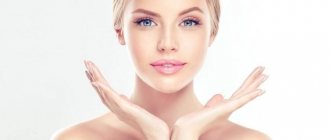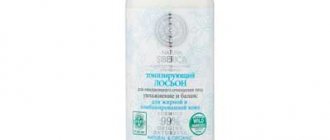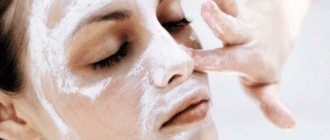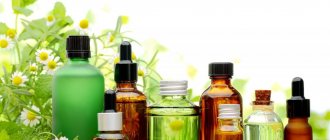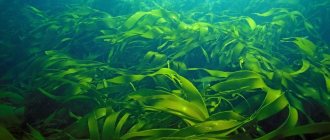How is yeast useful in cosmetology?
Yeast is made from single-celled fungi, which multiply quickly when combined with a favorable environment.
Almost every woman has this product for creating culinary creations and baked goods, but not everyone knows about the beneficial properties of the product in cosmetology. Most facial care products can be prepared at home.
Penetrating into the skin layers, active fungi in the yeast begin to feed on the products of the sebaceous glands. As a result of interaction, one’s own collagen is synthesized - the main substance for preserving turgor and youthful skin for many years.
It is worth noting the composition of the product:
- B vitamins. The component participates in metabolic processes, stimulate cell renewal and local immunity.
- A nicotinic acid. Vitamin PP increases muscle tone, turgor, and provides facial contour tightening.
- Vitamin D. An active participant in metabolism, metabolic and recovery processes. Provides detox to the skin, removes toxins from pores, regulates the functioning of the sebaceous glands.
- Mineral complex. Compounds of zinc, magnesium, calcium, iron, copper and phosphorus, together with polysaccharides and phospholipids, have a beneficial effect on skin function. The complex accelerates metabolism, rejuvenates the face, and participates in its own collagenesis.
The interaction of beneficial components nourishes the deep layers of the epidermis, rejuvenates cells, regulates water balance and improves blood microcirculation and lymph flow.
The result of treatment is radiant, healthy skin with a uniform tone. With regular use of masks, you can reduce the severity of facial and age wrinkles, including around the eyes.
A yeast mask for the face against wrinkles at home according to grandmothers’ recipes is prepared from improvised ingredients that do not require much expense.
Indications and contraindications
Who benefits from yeast-based masks? Homemade formulations are suitable for almost everyone. For very dry, thin skin, choose a different type of home remedy (nourishing masks with oatmeal are suitable). Correctly selected components guarantee excellent results.
Action on the skin:
- dry type of epidermis. The presence of moisturizing components in yeast masks nourishes and saturates with moisture;
- problematic skin. Use natural acne treatments to reduce inflammation;
- fading epidermis. Rejuvenation, improvement of tone, fight against fine wrinkles;
- oily skin. Mattifying, reducing the secretion of sebaceous secretions, cleansing clogged pores, combating acne and pimples;
- dull, sluggish epidermis. Returning an even complexion, giving a soft pink shade.
Contraindications
Yeast is a healthy product, but before using formulations prepared yourself, be sure to study the list of contraindications.
It's very short:
- individual intolerance;
- active purulent-inflammatory processes on the skin;
- noticeable damage to the epidermis;
- the presence of moles, warts, large age spots, and other formations.
Important! Many masks contain honey, lemon juice, essential oils, and eggs. If you know about allergic reactions to these products, stop using the products and choose others. There are many recipes with yeast to eliminate various problems of the epidermis.
Yeast face mask: indications
The basis of all face masks is yeast. Auxiliary components include almost any food ingredients that meet the needs of facial skin at different ages. Masks are suitable for women with the problems listed below.
INDICATIONS
- increased activity of the sebaceous glands and oily skin;
- greasy shine of the T-zone with a combination skin type;
- pale or grayish tint;
- drying out, peeling;
- mild forms of age-related ptosis;
- facial or age-related changes.
Masks are suitable for the treatment of non-purulent inflammation and acne. The use of anti-wrinkle yeast reduces the severity of wrinkles, crow's feet near the eyes, and nasolabial folds.
Contraindications (5 prohibitions)
Unfortunately, despite the benefits of the product for the face, yeast may be contraindicated for people with the following characteristics.
CONTRAINDICATIONS
- individual intolerance, allergic reactions;
- purulent infectious processes;
- extensive acne;
- papillomas, neoplasms, moles with questionable shape and growth;
- wounds, cuts, fresh scars after operations.
The product is not recommended for use immediately after invasive cosmetic procedures (injections, plastic surgery), peelings, laser resurfacing and other manipulations.
In case of a complicated allergic history, an allergy test should be carried out - apply a small amount of diluted yeast to the wrist or the area around the elbow. If there is no positive reaction within 24 hours, the product can be used as facial skin care.
Dermatologist Sanusi Umar
Popular masks for problem skin with rashes (TOP 3)
Yeast masks for the face against acne, acne, and skin rashes before menstruation in women are most effective. The following recipes at home will help correct the situation:
- With kefir. 25 g of yeast substance is diluted in 100 ml of warm water. Then add 2 tbsp to the composition. l. warmed fat kefir, 1 tsp. white or black clay. All components are thoroughly mixed, heated in a water bath, add 1 tbsp. l. alcohol or water based propolis. The thickened mixture is spread warm on the face, avoiding the area around the eyes. When it dries, then you can wash your face with warm water.
- With hydrogen peroxide. 2 tbsp. l. yeast from the briquette is dissolved with water in the usual proportion, peroxide 3% is added and quickly mixed until smooth. The finished mixture is applied to the face and kept for a quarter of an hour. For severe skin rashes, it is recommended to apply the composition only to these areas. It is better not to lubricate healthy skin. Afterwards, the composition is removed with a cotton pad with lotion for oily and inflamed skin. The mask helps get rid of blackheads and improve acne healing.
- With sparkling mineral water. Dissolve 1 tbsp in 100 ml of heated mineral water. l. yeast mass, bring to a paste-like substance with rye flour, add 10 drops of fresh lemon juice. The resulting mass is left to “reach” for 3 hours, then applied to the face, avoiding the periorbital area. After 25 minutes, rinse off the product, blot with a paper towel and moisturize with cream.
For better penetration into subcutaneous structures, preliminary dry or steam steaming is recommended. After the procedure, you should not treat the skin with an antiseptic, as this stimulates the production of subcutaneous sebum and reduces the effectiveness of the cosmetic product.
Rules for performing masks
There are plenty of varieties of yeast masks. But before considering specific ones, we will name the basic rules for their use. Each procedure is carried out according to the following recommendations.
- Yeast should not be heated. If a recipe calls for reconstitution in warm water, it should be slightly warm water, not boiling water. As soon as yeast gets into boiling water, all its beneficial properties disappear.
- The mask must be applied as soon as possible. Upon contact with other components, yeast quickly dies, since the normal conditions for its existence disappear. Accordingly, the mixture cannot be stored. Ideally, the composition should be applied to the skin immediately after preparation.
- “Live” yeast is used to prepare masks. It makes no sense to use yeast in powder, that is, dry. They contain a minimum of useful substances, and often the necessary components are missing. Another option is to use brewer's yeast. But the big question here is whether they will be effective. They are healthier to take internally than to use for masks.
- Before applying the composition, the skin must be thoroughly cleansed. The optimal effect can be achieved if you hold your face over a steam bath, open all the pores, and then proceed to the main procedure.
- There is no exact fixed time for which you need to keep the mask on. The only recommendation is to wait until the yeast on your face is completely dry. This requires 15–30 minutes. If you heat it into the mask during the session, the effect will be better. To do this, place a film on it and a warm towel on top.
- There is no particular point in using a mask alone. To achieve the best effect, you need to carry out at least 10 procedures. Maximum – 15. Next, the main method of care needs to be changed.
- To wash off the mask, just use regular warm water. To tidy up the skin, wash with cold water or use ice made from herbal infusion.
Recipes for masks at home against wrinkles (TOP-8)
To reduce the severity of age-related changes and improve skin turgor, it is recommended to make anti-aging yeast facial masks at home:
- With yogurt or sour cream. Express product for instant smoothing of the face. To prepare the composition, combine 20 g of the yeast component with 150 ml of warm kefir or yogurt, add 10 drops of lemon juice, 15 drops of apricot oil. The consistency is left to stand for 2-3 hours. After a while, the product is slightly heated in a water bath and applied warm to the face, especially to the nasolabial folds, forehead, and wrinkles near the eyes. After 25 minutes, wash off the product with warm water and moisturize with day cream. According to reviews of yeast face masks, the skin rejuvenates, becomes soft and elastic, like an expensive cream.
- Nutritious with berry mix. A popular berry for intensive nutrition is strawberries. To achieve maximum results, crushed berries are added to yeast diluted in 150 ml of water and brought to fermentation: gooseberries, strawberries, black and red currants, blackberries, honeysuckle and others according to the season. The composition is kept on the face for 30 minutes, after which it is washed off. The face becomes slightly pinkish, which indicates deep cleansing, nutrition, and improved blood and lymph flow. Masks with berries should be made no more than 2-3 times a week.
- With peppermint. A yeast face mask for normal skin is prepared as follows: 15 g of base is poured into 100 ml of warm water, wait until it swells and add peppermint decoction. 1 tbsp. l. leaves are poured with boiling water, infused until the color is rich, filtered, and 100 ml of the decoction is added to the resulting mass. You can use fresh mint leaves (sometimes lemon balm), crushed in a mortar. The composition is applied to the face for 20 minutes, rinsed off with running water.
- On a chicken egg. Add 10 drops of avocado essential oil, the yolk of one chicken egg, and 5 drops of lemon juice to the prepared yeast composition. All ingredients are thoroughly mixed, slightly warmed and applied for 20 minutes, avoiding the skin around the eyes. The mask can tighten the skin, so after the procedure the dermis is moisturized with a nourishing cream.
- Oatmeal-kefir. 2 tbsp. l. oatmeal pour 300 ml of hot water and leave for 5 hours. Add 1 tbsp to the swollen mass. l. brewer's yeast diluted in 100 ml of warm kefir and left to ferment for 3 hours. After preparation, the mixture is slightly warmed and applied to the face. You can secure the mask with a wide cotton napkin and lie down so that the mass does not drain. The result of the procedure is moisturized skin with a healthy tone. A yeast face mask reduces wrinkles in the nasolabial triangle.
- Based on vegetable oil. To improve the appearance of dry skin, use a yeast face mask for dry skin. To prepare the mixture you will need to dilute 1 tbsp. l. yeast component in 100 ml of warm water, add 3 tbsp. l. oils (olive, linseed, sea buckthorn). The finished composition is heated in a water bath, applied warm to the face until it cools completely. After 15 minutes, the composition is washed off with a warm chamomile decoction or water with lemon juice.
- Wheat-honey with propolis. Combine the finished yeast mixture with 1 tbsp. l. sifted rye flour, add 50 ml of warm milk with 10 drops of propolis. The composition is kneaded to a pasty consistency and left on the face for a quarter of an hour. The substance is washed off with warm water and moisturized with the usual cream.
- Floury. Yeast starter in milk is combined with 2 tbsp. l. flour so that you get a mushy mass. For great effect, add 5 drops of lemon juice and 10 drops of tea tree essential oil to a yeast face mask for problem skin. The composition is brought to readiness for about 2 hours, then heated and applied to the skin. The mask is washed off with warm water and calendula decoction.
To prepare anti-wrinkle masks, it is recommended to choose yeast in briquettes. The crumbly product in bags is not suitable, as it undergoes additional stages of technological processing, which reduces efficiency and reduces nutritional value.
Side effects
Yeast masks may cause redness of the skin. When applying the product to your face, you may feel a slight tingling sensation. This indicates the expansion of capillaries, due to which the mask improves complexion. As a rule, redness is slight and goes away within 30-60 minutes after removing the composition from the skin. However, with rosacea, the redness may not go away for a long time, so you need to use such masks carefully.
If, after using a yeast mask, red spots and an itchy rash appear on your face, you should take an antihistamine and do not use yeast for cosmetic purposes, because such symptoms indicate an allergy.
Popular masks for aging skin
According to women's reviews of the yeast mask for the face against wrinkles, they are positive. Aging skin requires special care. The severity of cosmetic defects is difficult to eliminate only with home correction methods.
However, yeast masks for the face against wrinkles can help improve the effect of cosmetic procedures after rehabilitation, as well as prolong the anti-aging effect:
- Based on butter. To make the composition, yeast starter in proportions of approximately 100 ml is combined with warm kefir and 1 tbsp. l. melted butter. The composition should be warm when it is applied to the skin surface. For dry skin, it is recommended to add 10 drops of sea buckthorn or castor oil, for combination and oily skin - 2 drops of tea tree oil. The composition is washed off and a cream or serum for aging skin is applied.
- Multivitamin. Mature skin with wrinkles requires intensive nutrition. For this purpose, a ground mixture of fruits is added to the prepared yeast mixture: banana, tangerine, lemon with zest and coconut oil. After mixing, the consistency should be supplemented with 1 capsule of vitamin A and vitamin E.
For aging skin, masks must meet the nutritional and collagen levels. If you achieve these conditions, you can significantly reduce the severity of wrinkles and eliminate the appearance of new ones.
Dermatologist Brian Chen
For wrinkles around the eyes
The skin around the eyes begins to change at the age of 25. With facial activity, wrinkles manifest themselves from the age of 22.
You can get rid of changes using a yeast face mask with the following recipe:
- Grind half a lemon along with the zest in a blender, add egg white, yeast starter and flour to obtain a homogeneous mushy mass.
- Apply the resulting mixture to the skin around the eyes, leave for about 10-15 minutes, and rinse with running water.
- The skin is treated with a rich cream and special-purpose serum.
Yeast face masks at home allow you to achieve the first results after 4-5 sessions. Pimples are reduced, subcutaneous sebum production is normalized, and subcutaneous metabolism is regulated.
Expert opinion
- Cosmetologist
- Surgeon
Anna Avaliani
practicing cosmetologist
Choose fresh ingredients if you want to make homemade masks. Remember that some components may cause an allergic reaction. Therefore, it would be worthwhile to first test the mask on a small area on the body.
Sheila Nazaryan
plastic surgeon
Don't forget to cleanse your face well before applying any mask.
A better effect can be achieved if you first scrub and steam the skin. Reviews and before and after photos of anti-aging yeast facial masks can be seen on women's forums. It is important to understand that wrinkles are not a pathological process that developed within a week.
Solving the problem at home will take up to six months of regular procedures along with a healthy lifestyle and quality nutrition.
Useful properties of yeast
Regular application of yeast masks will have a beneficial effect on all types of dermis:
- Normal. Micronutrients contained in yeast have a positive effect on the appearance of the dermis and maintain its health.
- Dry. Natural ingredients moisturize the face as yeast contains a lot of biotin.
- Fat. The active substance narrows enlarged pores and normalizes the production of skin secretions.
- Problematic. Yeast relieves inflammation, removes acne, acne spots and pimples.
- Annoyed. Due to the high content of vitamin B, yeast soothes the face, removes redness and flaking, and evens out the tone.
- Fading. Thanks to the activation of the production of collagen fibers, the epidermis is gradually restored and looks more toned.
